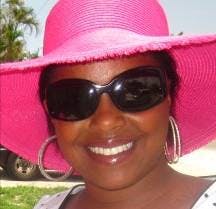So you learn the client you are recruiting for has a diversity initiative. Hold on…did you just receive a discriminatory job order? What the heck does diversity even mean? Do they just want women? Blacks? Tall people? Tall black women who can play the banjo? What exactly are they asking for!?!?
Funny thing is, if you ask the client, they usually won’t tell you exactly what they want either. Most companies these days strive to have a diverse group of employees. But what does this mean for recruiters that are tasked to find the diverse “ones?” We need to remain “PC” and keep our client happy. This is a very delicate balancing act.
In order to put things in proper perspective and truly understand what recruiting diverse candidates would mean, I had to break it down.
Merriam Webster’s dictionary defines Diversity as the condition of having or being composed of differing elements: Variety; especially: the inclusion of different types of people (as people of different races or cultures) in a group or organization. You can also look at this article posted by Kay Kelison recently right here on SourceCon for an accurate description of what diversity is.
OK that’s cool. It makes sense. But, wait… what about the Equal Employment Opportunity laws?
They are very specific that employees should be hired on skill set alone. Doesn’t that throw a wrench in the whole diversity recruiting thing? How can I legally select (or discard) qualified candidates simply because a client thinks they are not diverse enough. That seems unfair and frankly, kind of dishonest.
So, here’s the real deal. Companies will not discriminate. They can’t, if they want to abide by the law. But, they can build an environment that will allow them to obtain the buying power of ALL groups. This is not a Black-and-White situation (pun INTENDED). We are talking about groups like single mothers, immigrants, different educational levels, people with disabilities; the list could go on and on.
Granted, the world has changed considerably. I won’t bore you with all that Gen X, Y, Baby Boomer stuff, but in offices today you will most likely find a good blend of age groups. You may have some folks that went to a segregated school, some who didn’t have a microwave until they were 13, and some who have never had a television without a remote control. Having this blend allows an organization to understand and target their various aged customers.
Companies are now looking to build environments that can be an accurate reflection of our world’s changing demographics. When a work environment is filled with people from several different generations, races, ethnicities, sexual orientations and the like, it will be more in tune with the people whom they are serving! A diverse workforce allows companies to have a strong competitive advantage. Ideally, the mix of people will encourage mentoring programs, allow an organization to have a better grasp of the market, and provide connections that will give them a better perspective on reality.
When asked to source and recruit for diversity, here are ten things to consider:
- Be aware of your own biases and stereotypes before starting to search for candidates. (If you can’t leave those at the door, you may want to rethink if being a recruiter is right for you…)
- Get a very detailed job order that describes in detail what skills the candidate needs to bring to the table.
- Post jobs in several different places that will attract a broad range of candidates.
- Go out and source rather than wait for a candidate to come to you! Make sure when going to networking events that you look for a group that have an assortment of members who may be different than you.
- Make sure that the images potential candidates will see when looking at your website, brochures, or other marketing materials show a diverse range of people. It is even better to have real pictures of real employees!
- Make sure that your interviewing space is accessible to people with various disabilities.
- Go to diversity job fairs.
- Continue to proactively recruit solid top candidates with a diverse background.
- Perform group interviews and make sure that members of the interviewing team are diverse as well.
- And of course, referrals!
Diversity isn’t a bad word. It’s not a “race” issue, but it is an inclusion issue. It’s about working together to help people and organizations work better. Like what Malcolm Forbes said “Diversity: The art of thinking independently together.”
